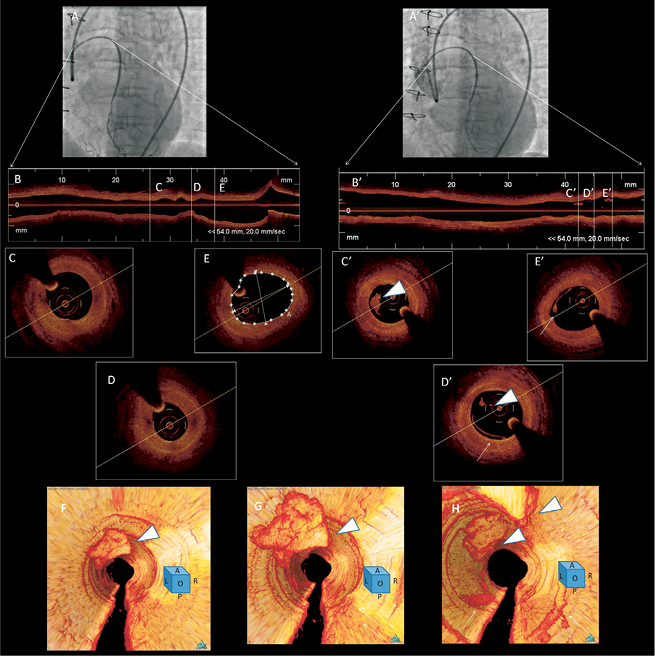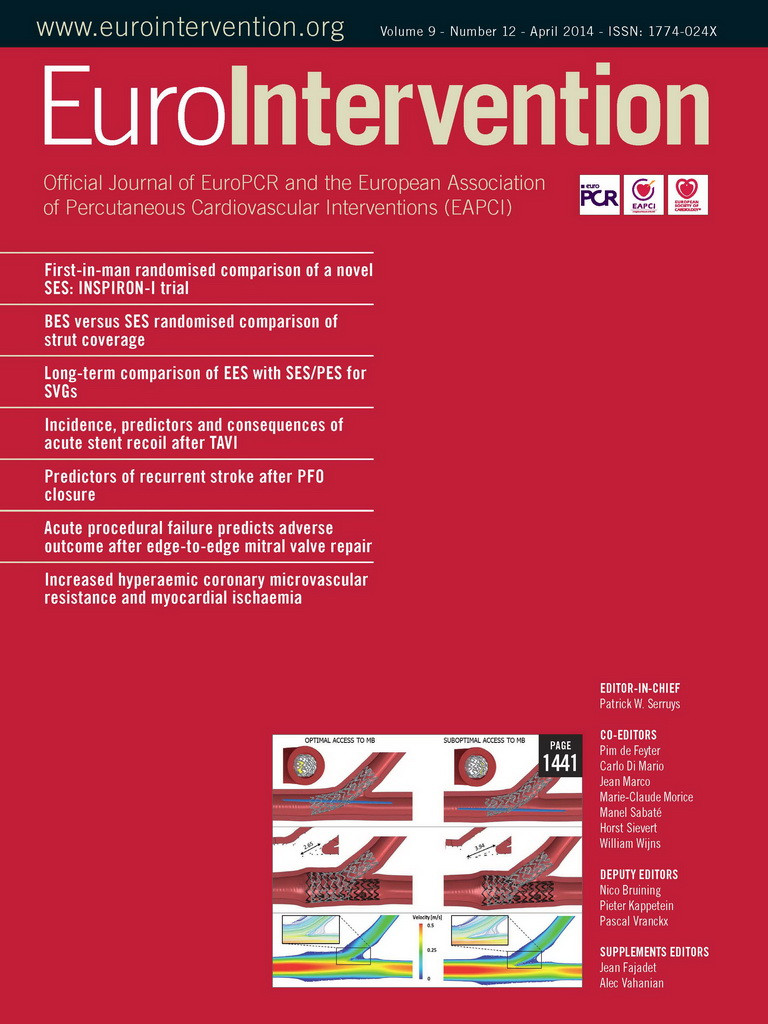A 73-year-old woman with a history of coronary artery bypass (saphenous vein graft [SVG] for left anterior descending artery [LAD] and right coronary artery) was admitted for non-ST-elevation acute coronary syndrome. Coronary angiography showed a proximal severe stenosis of the SVG for LAD that was the culprit lesion of the acute coronary syndrome (Figure 1A). Frequency-domain optical coherence tomography (FD-OCT) was performed using a non-occlusive technique and showed a highly fibrous stenosis of the SVG (MLA 0.7 mm2) (Figure 1B-E) that was debulked with excimer laser coronary atherectomy (ELCA) (Figure 1-A’,B’). However, a thrombus occurred at the lesion site immediately after ELCA (arrowhead), probably due to a dissection of the intimal layer (arrow) (Figure 1A’-E’,F,G,H). A drug-eluting stent was eventually implanted. After the procedure no rise in Troponin T levels was observed and she was asymptomatic at six months on double antiplatelet therapy.

Figure 1. Angiographic and FD-OCT findings before and after ELCA (Vitesse 1.7; Spectranetics, Colorado Springs, CO, USA). FD-OCT was performed using a non-occlusive technique with 20 mm/sec pullback C7 XR machine (LightLab Imaging Inc./St Jude Medical, Westford, MA, USA).
SVG disease is associated with thrombi and cholesterol debris accumulation, and percutaneous interventional techniques in SVG are associated with significant risks of distal embolisation. This is, to our knowledge, the first report of intracoronary FD-OCT imaging showing debulking by ELCA of SVG lesions.
Conflict of interest statement
The authors have no conflicts of interest to declare.

